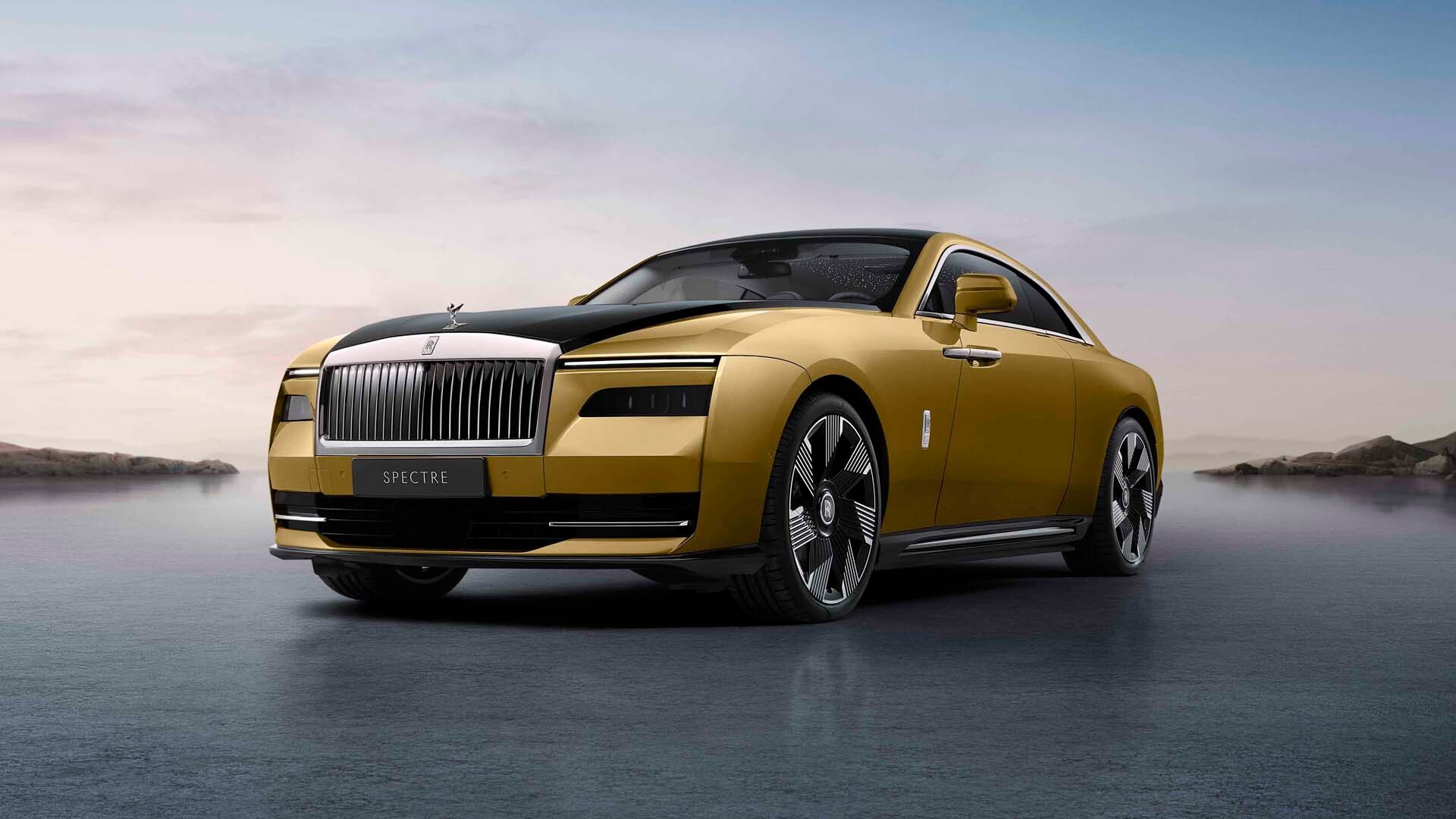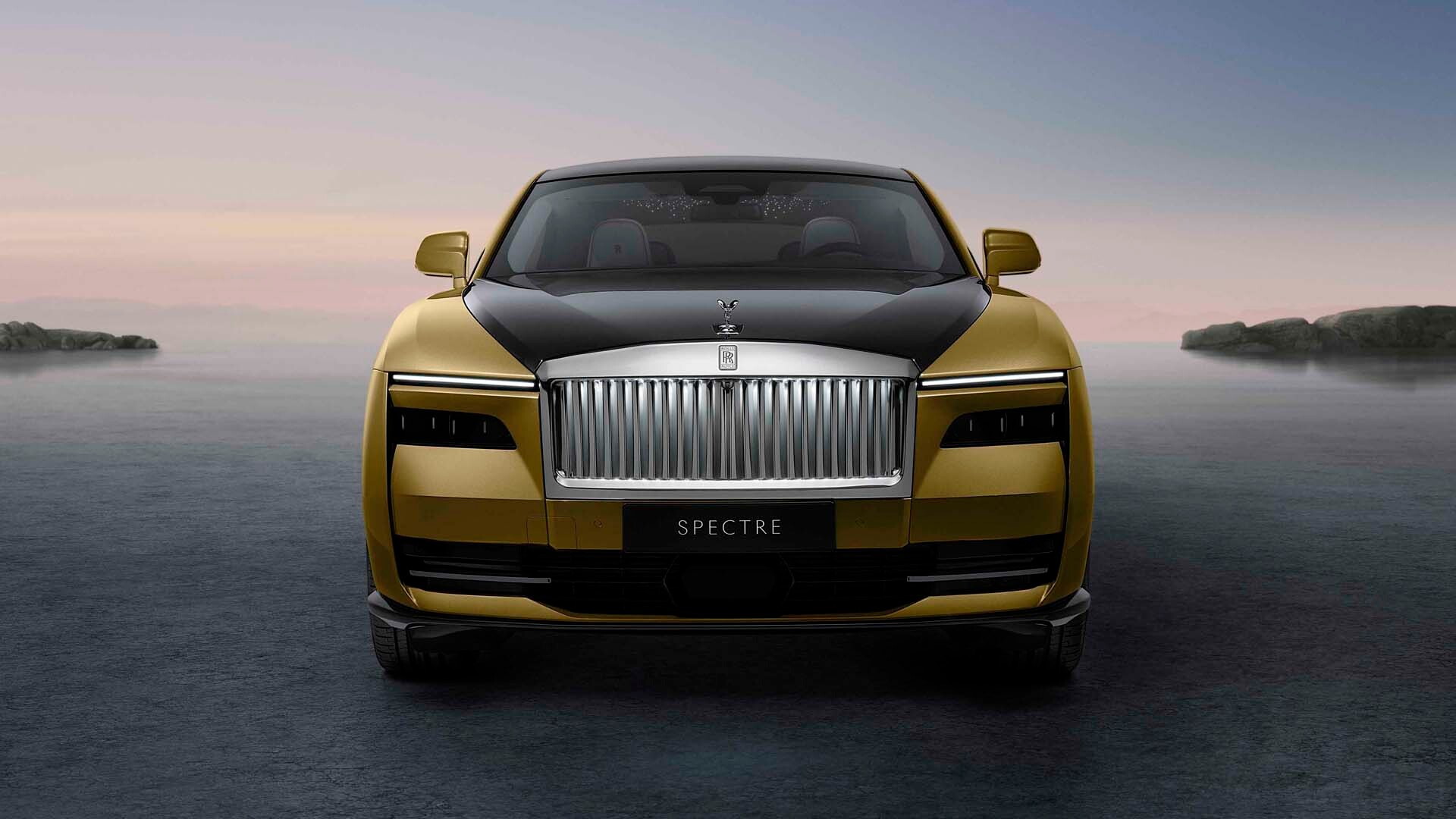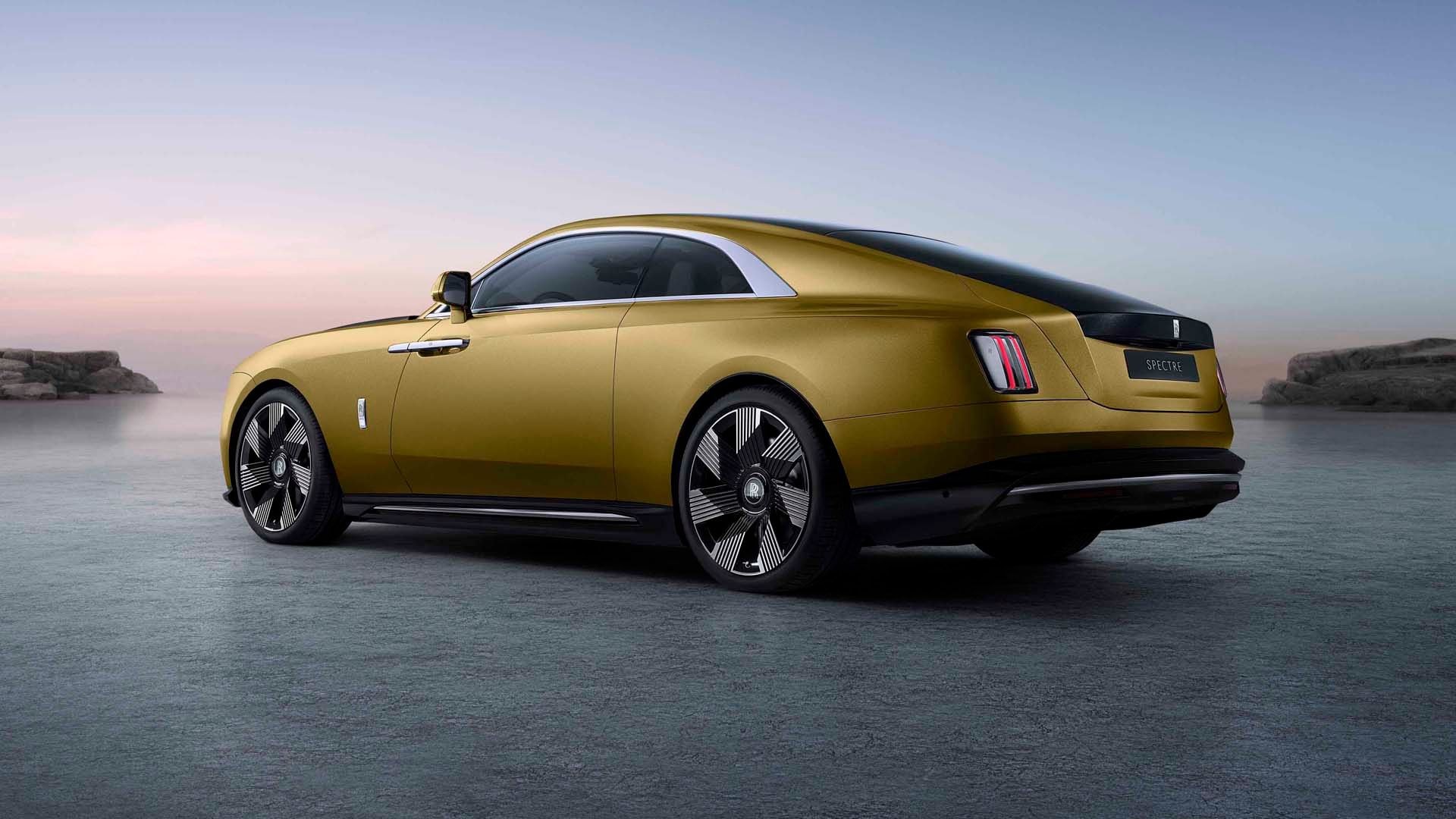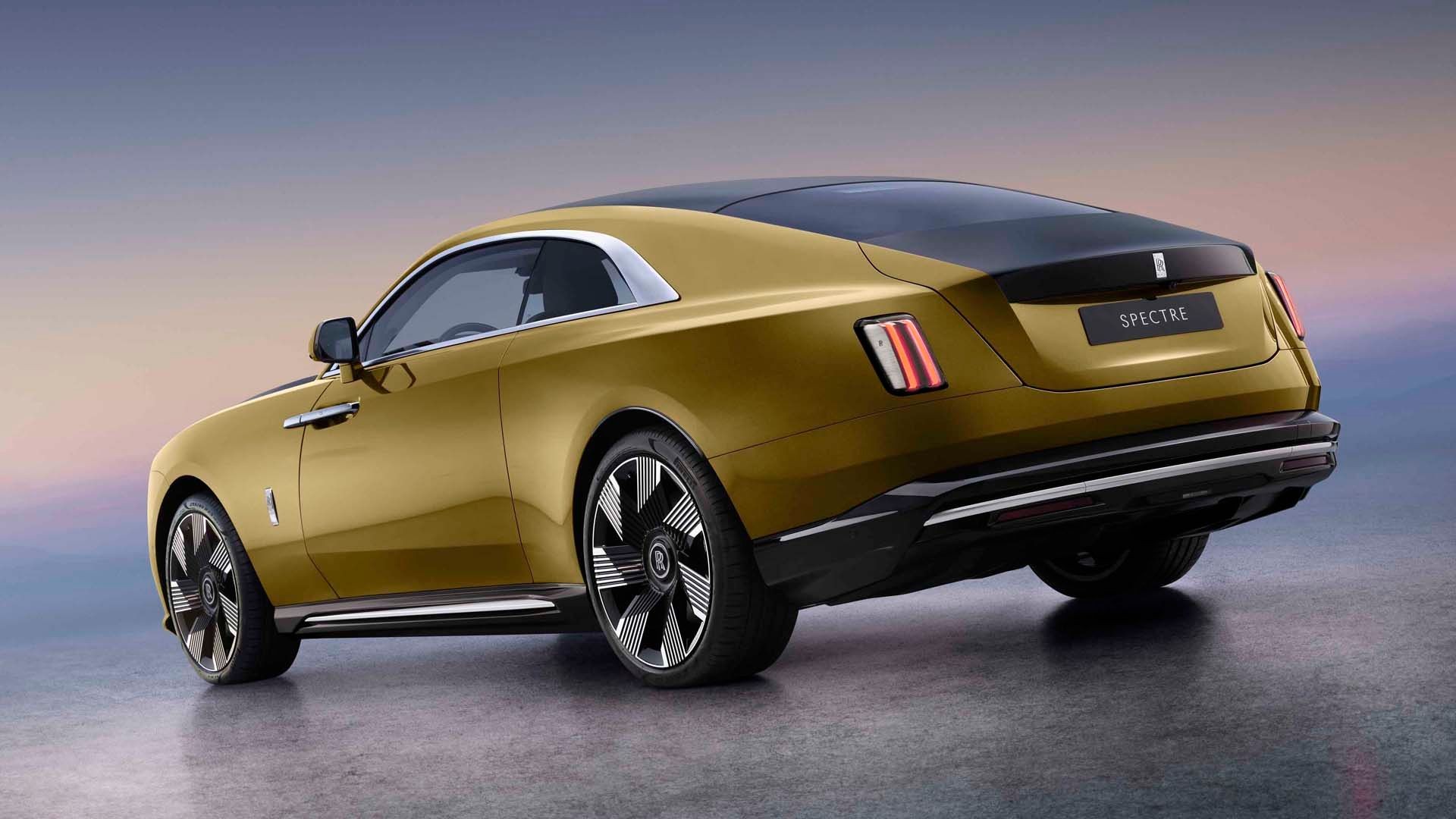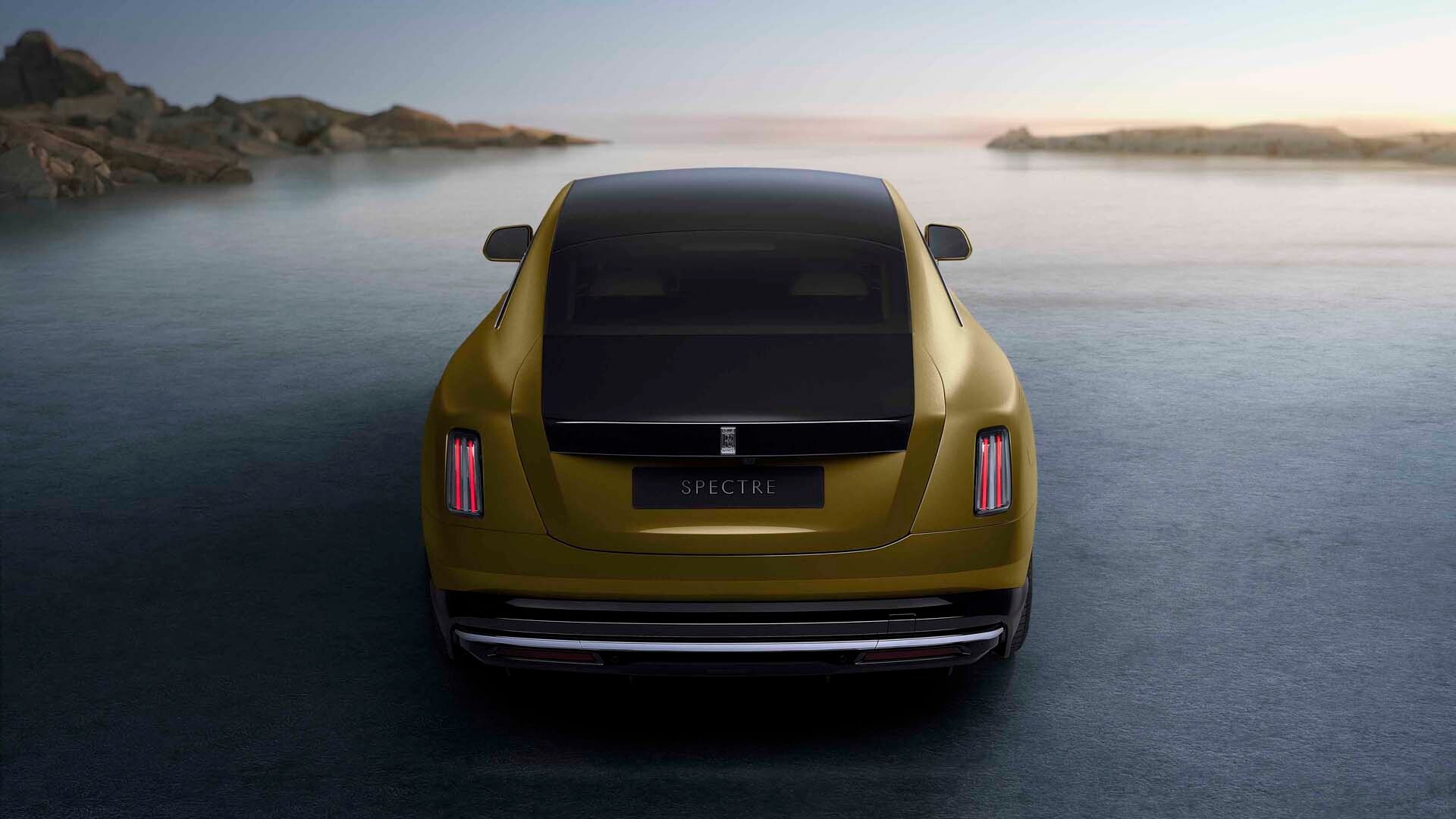The Rolls-Royce Spectre is the automaker's first electric car to see production, and it proves even gilded luxury cars don't have to be inefficient.
Because despite living up to Rolls' tradition of excess—and that it's a two-door car with a 214-plus-inch length—efficiency is actually pretty good, at 2.9 mi/kwh on the European WLTP testing cycle. For context, the GMC Hummer EV is in the range of 1.5 mi/kwh, although its size excludes it from official ratings.
Due to start deliveries in the fourth quarter of 2023, the Spectre will also deliver an estimated 260 miles of range on the EPA testing cycle, when equipped with 23-inch wheels. Rolls didn't disclose the size of the battery pack, however, only saying that it weighs 1,543 lbs—almost a quarter of the Spectre's 6,559-lb curb weight. It does provide a lot of sound deadening, Rolls noted.

Rolls-Royce Spectre
That's an astounding weight for a two-door, four-seat coupe, especially considering that the Spectre uses an aluminum space-frame architecture. It's an adapted version of the one used by Rolls' current gasoline models, but the automaker claims a 30% increase in rigidity thanks to use of the pack as a structural element and some steel reinforcement, which likely doesn't help with curb weight.
A 0.25 coefficient of drag makes the Spectre the most aerodynamic Rolls production car ever. That's not quite as low as the Lucid Air, Mercedes-Benz EQS, and Tesla Model S, which come in at 0.20 to 0.21, but Rolls also went with a more traditional shape, with a strong resemblance to the Wraith coupe the Spectre essentially replaces. It even retains that coupe's suicide doors.
A dual-motor all-wheel drive powertrain produces an estimated 577 hp and 664 lb-ft of torque. This should enable 0-60 mph in 4.4 seconds, Rolls estimates, while the top speed is capped at 150 mph.
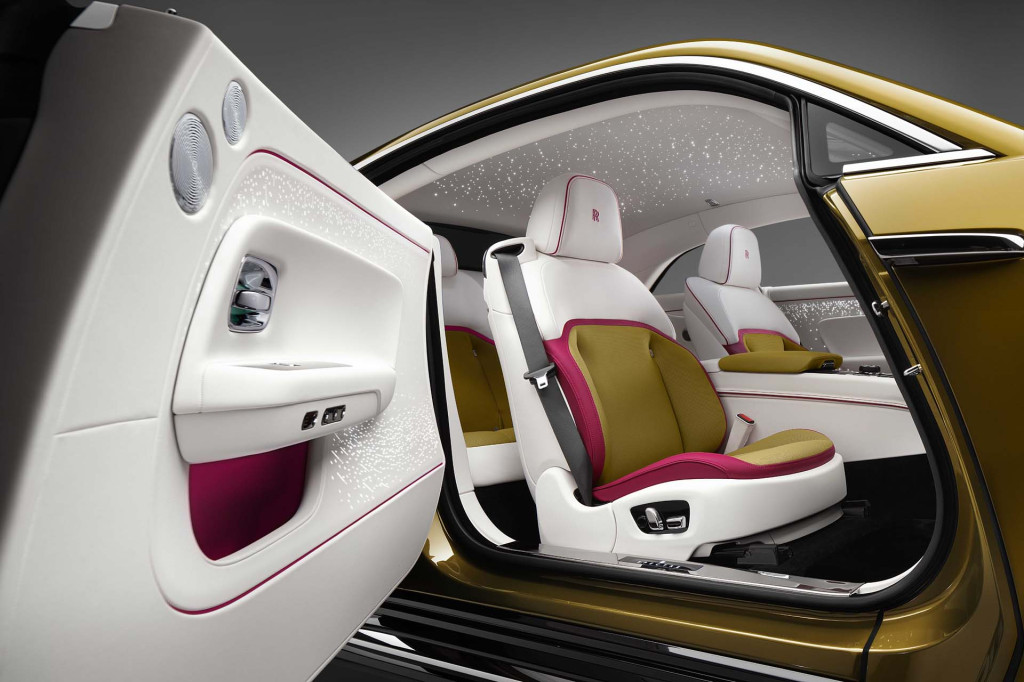
Rolls-Royce Spectre
The Spectre is more about comfort than performance, though. Rolls addressed that with what it calls a Planar suspension system, an electronic roll-stabilization system that can pull data from more than 18 sensors to read the road surface and monitor vehicle status, as well as information from the navigation system, for suspension adjustments.
On straight roads, the system can decouple the anti-roll bars, allowing each wheel to move independently for a smoother ride that negates the vibration or rocking motion that typically occurs when only wheels on one side hit a bump, according to Rolls. Using the navigation system to anticipate curves, the system can re-couple the anti-roll bars, stiffen the dampers, and engage a four-wheel steering system for drama-free cornering.
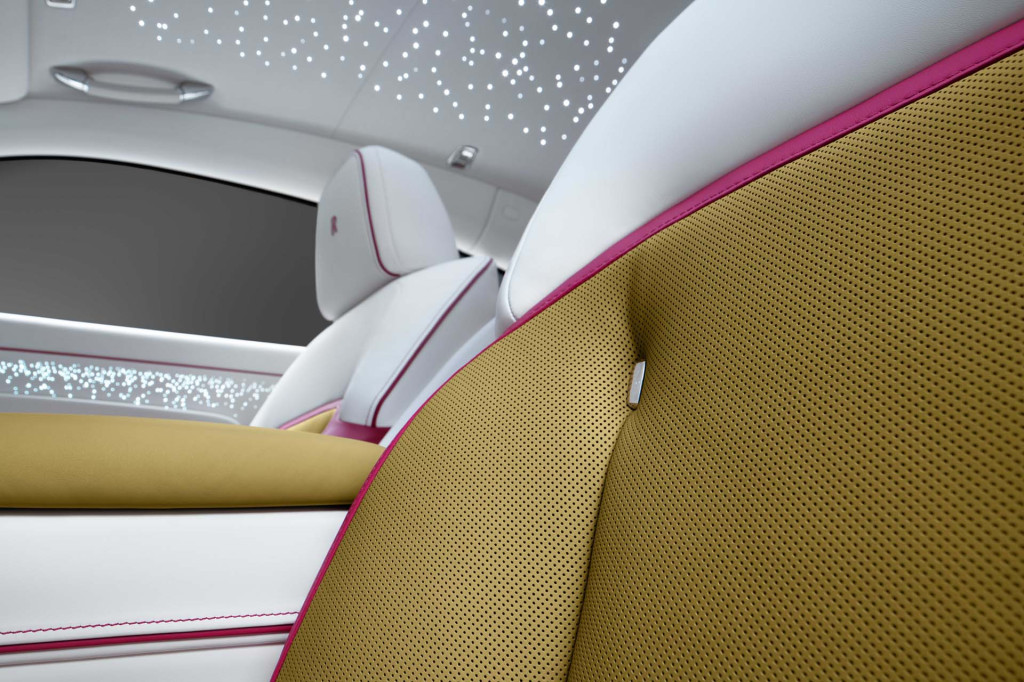
Rolls-Royce Spectre
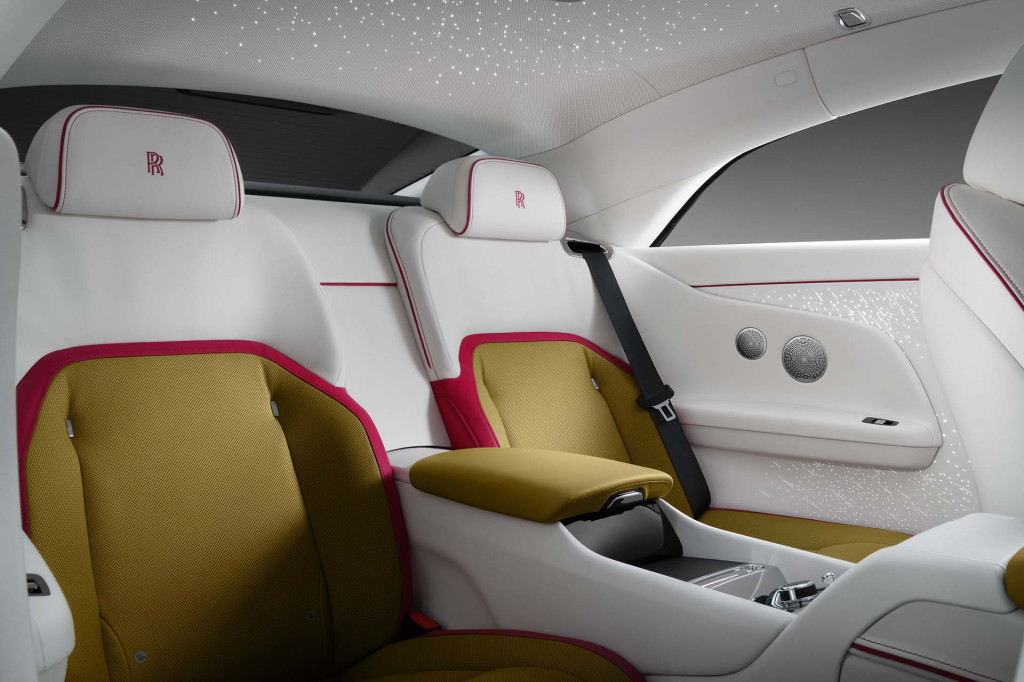
Rolls-Royce Spectre
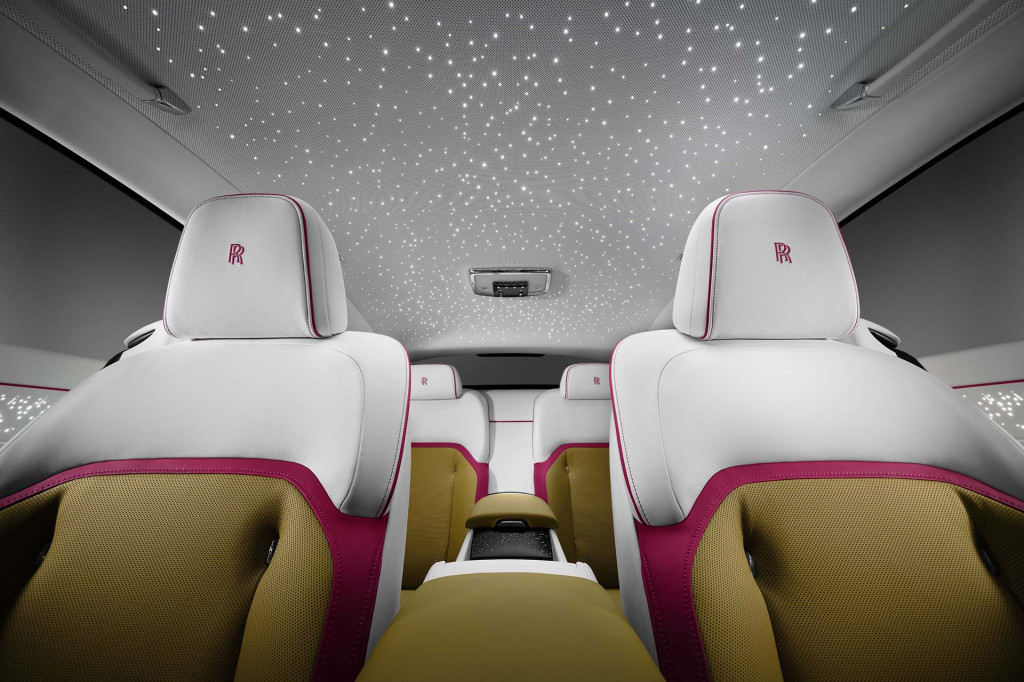
Rolls-Royce Spectre
The interior is typical Rolls-Royce, with high-end materials and a high level of personalization potential. As with other Rolls models, the headliner can be equipped with illuminated "stars," but in the Spectre they now extend to the door panels as well.
The Spectre has been a long time coming. Rolls first hinted at an electric car about a decade ago with the Phantom 102EX prototype. That project didn't go anywhere and was replaced with a plan for plug-in hybrids. But then in 2016, the company seemingly returned to an electric vision.
Rolls-Royce is now due to go all-electric by 2030 under parent BMW's ambitious electrification plan. It's amounted to some noteworthy synergy with the Rolls-Royce aviation company, from which the car business was split off in 1973, which is also experimenting with electrification.
